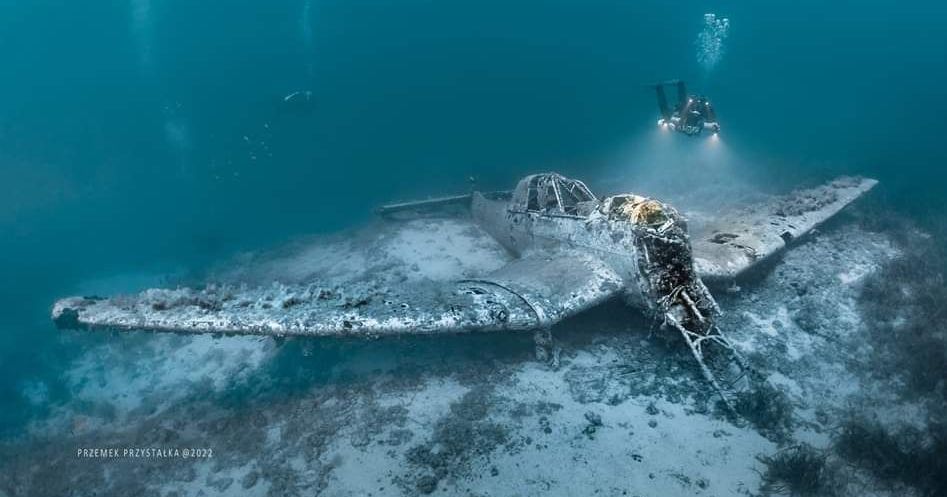
JUNKER 87 R "STUKA"-ZIRJE|HISTORIC WRECK
At the end of September 2014, the dive bomber Ju 87 R-2 was found by chance during a harpoon competition near the Croatian island of Zirje. The significant discovery caused a stir at the time since just a few of a total of 5,752 bombers produced in Germany were still in good condition.
The wreck is remarkably well preserved; it is even said to be the world's best-preserved Stuka bomber. The engine is in a different bay, probably torn off by the impact to the sea surface or abducted by fishing nets. Other than that, the plane stands almost completely intact on its wheels on the seabed at a depth of about 28m, as if it had just made a soft landing.
The enthusiasm of divers to visit the wreck was great; however, the site was initially closed to them, and the wreck was put under monument protection. Experts from the Military Museum of the Croatian Ministry of Defense identified the aircraft very quickly as an Italian Sturzkampfbomber (or "Stuka" for short) Junkers Ju 87 R-2
History. At the beginning of April 1941, Yugoslavia was invaded and occupied within a few days during the Balkan Campaign. In this blitzkrieg, German troops came to help the Italians. The ultimate goal of the Italians then was Greece—the path towards which led over Yugoslavia.
According to the Croatian Ministry of Defense, there could be found information in the literature about the attack of three Italian Stuka bombers Ju 87 R. On 12 April 1941, these bombers flew attacks on two Yugoslavian warships that took the position in the bays of Jadrovac near Sibenik. Two of the Stukas were shooting, one of them was destroyed, and the pilot was killed. The second Stuka bomber was damaged and forced to go down on the water. Since then, it has been sitting on the seabed.
No one knows what happened to the pilots. The dome over the cockpit is missing, and no human remains were found. Presumably, the pilots were able to save themselves.
Diving allowed. At first, the wreck was closed to the public. Experts examined the aircraft, and some parts have been removed and preserved in a museum, for example, the typical MG15 machine gun from the rear cockpit and the control horn from the cockpit. Plans to salvage the wreckage for preservation and exhibition have been discharged. The Ju 87 R-2 was declared a cultural heritage.
Since the end of April 2015, diving at the bomber is allowed to do, dive centers can purchase a license and bring their divers to the wreck. At least one person from the dive center must be present during the dive to make sure no one damages or removes parts of the wreck.
The depth is about 28m. The Stuka Bomber stands on the sandy bottom in Poseidon grass. The engine has now been transported to the wreck and is placed just a few meters from it. While descending, the Ju 87 can be seen from just 10m under the surface. The site is flagged on the sea surface with only plastic bottles on nylon cords so that it would not be found easily by unauthorized persons. Divers should strictly avoid contact with the wreck.

